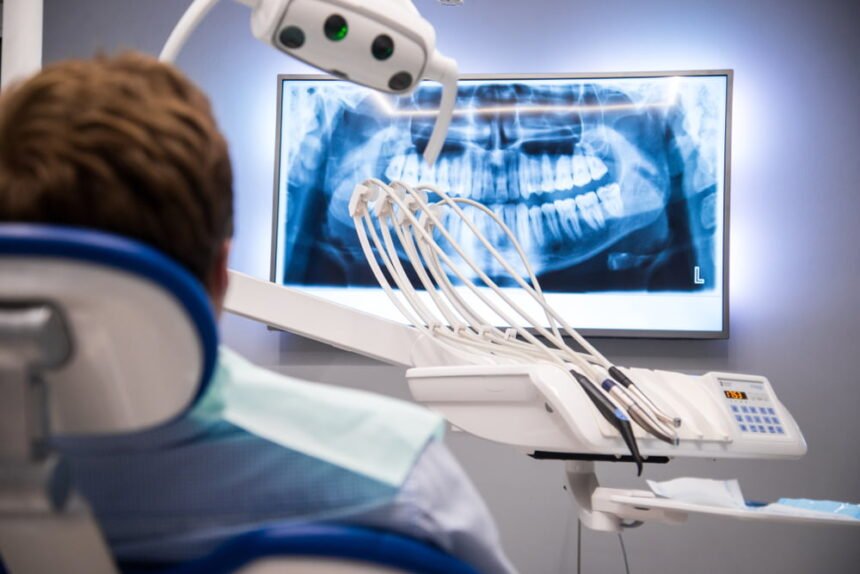When talking about the evolution of dental care, it is essential to note that it was made possible by breaking advances in dental technology. The profession is evolving as new technology becomes more widely accessible.
Dentistry, in simple terms, is the study and practice of dental health. It is a branch of medical science that focuses solely on dental health. This practice has developed complex methods that allow spotting abnormal teeth conditions that cannot be seen by regular dental examination.
The primary method of examining dental health for abnormalities in dental health is using x-rays. Dental x-rays function similarly to regular x-rays because they are used to identify complicated dental issues so the dentists can diagnose and procure a solution. This technology is essential for every dentist; in some cases, the standard examination might not be enough to spot a dental issue; thus, putting oral health and general health at risk.
General health? Yes, in a study to show how oral health impacts general health, it was seen that some oral health conditions could lead to life-threatening ailments like heart diseases if not identified in time. Hence, using dental x-rays, these oral health diseases can be spotted and treated in time. Highly-trained dentist Dr. Dowse has tested the fact the introduction of x-rays has made it feasible to identify and address some serious dental health issues.
There are practically two types of dental x-rays used in dentistry, traditional and digital x-rays. The former is the first type of x-rays to ever exist in medical science, and the latter is an optimized and enhanced version of the former. This article will highlight the history of both dental x-rays, their work, and which x-ray is best for dental use. So, you should read ensure to read to the end, especially if you have an interest in the topic or you want to learn more about it.
Origin of Dental X-rays
As mentioned earlier, the first type of x-rays to ever exist in medical science is the traditional x-ray. These x-rays were introduced between 1895-1900 and became fully used in 1900. They use radiation beams to scan the body, capturing imaging of the body system for the physician’s use. In dentistry, x-rays were used to capture imaging of the mouth. The dentist uses the obtained image to diagnose the dental issue to procure a competent solution.
These x-rays were in two forms, intraoral and extra oral traditional orals. From their names, you can tell that intraoral involved capturing internal imaging of the mouth, and extra oral involved capturing external imaging. Extra oral traditional x-rays were primarily used when the dentists suspected the dental issue to be from the jaw.
However, from constant use of traditional x-rays, they were discovered to have some drawbacks promoting the development of digital x-rays. Digital x-rays were developed 90years after traditional x-rays and were seen to be more efficient with minimal drawbacks. These x-rays operate similarly to traditional x-rays but use sensors instead of radiation to capture images.
Which X-ray is Ideal for Dental Use?
The points outlined below will compare both types of dental x-rays while giving reasons on which of the two x-rays is ideal for dental use. They include:
- Safety: As mentioned earlier, traditional x-rays had some drawbacks, with the primary drawback being the threat is poised to general health. Traditional x-rays exposed the body to excess radiation, a major cause of health conditions like cancer; thus, it was deemed unsafe. However, digital x-rays expose the body to a minimal amount of radiation because it uses sensors, thus, making it safer for general health.
- Comfortable examinations: Another drawback of traditional x-rays is that the examination process can be a tad uncomfortable because you must take extra measures to protect your body from radiation exposure. However, with digital x-rays, comfort is ensured as not everything is done easily and quickly.
- Time-consuming: Traditional x-rays require time to process the captured images into film (hardcopy), plus the time the dentist will use to study the image before diagnosing the problem. This is different in digital x-rays as it is computerized, where captured images are collected, processed, stored, and displayed in digital form. Plus, the images are clearer, and the availability of a digital storage system makes it easy to acquire the captured images anywhere and at any time.
Conclusion
To answer the question, “which x-rays are ideal for dental use?” we can conclude that digital x-rays have the edge over traditional x-rays in every way, making them a more fair bet for dental use.

